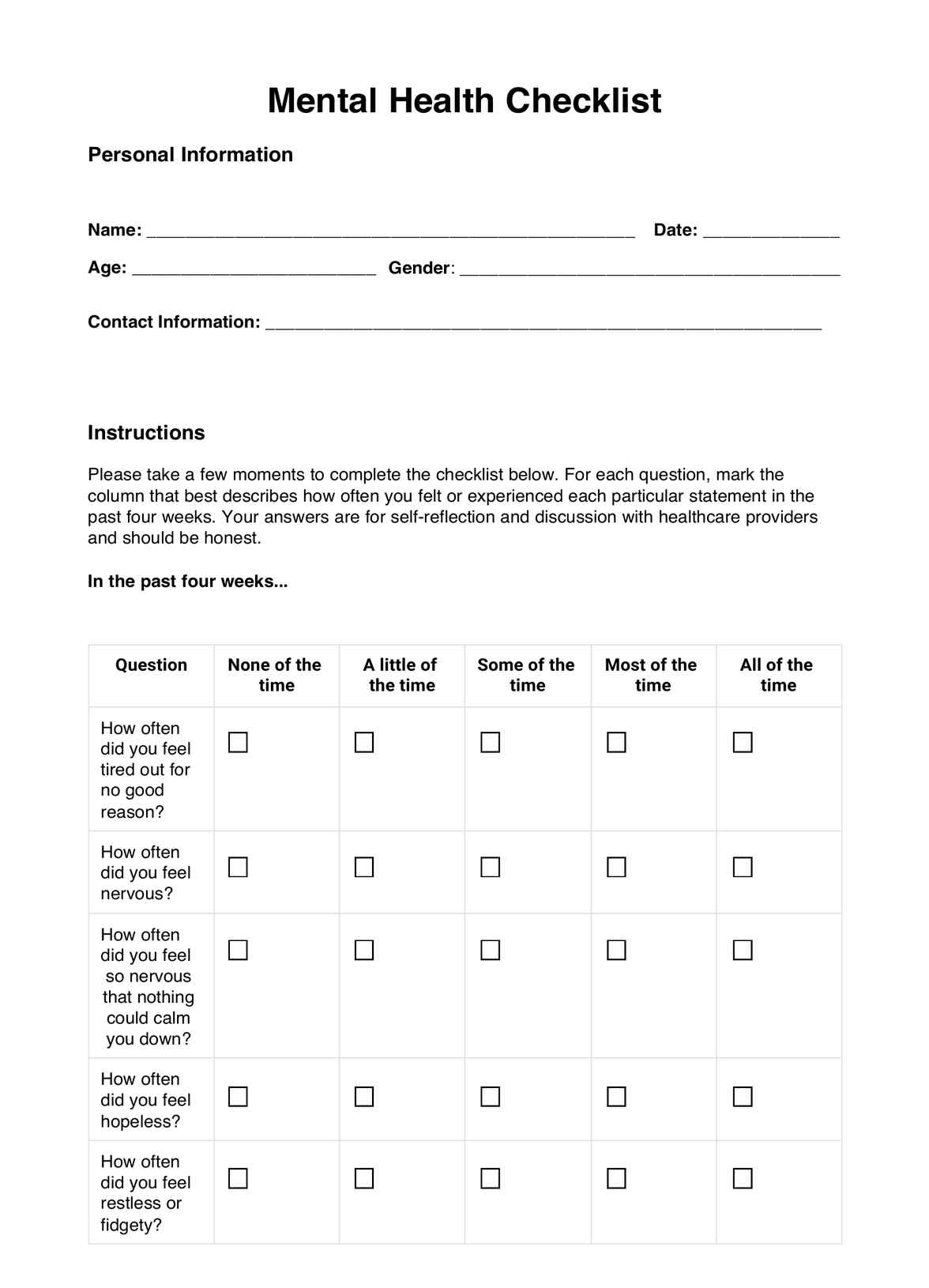Individuals interested in self-assessment and healthcare providers like therapists, counselors, and general physicians are typical users of Mental Health Checklists.

Mental Health Checklist
Read a comprehensive guide to understanding a Mental Health Checklist, how it works, and why it's an essential tool for individuals and healthcare providers.
Use Template
Mental Health Checklist Template
Commonly asked questions
They are commonly used during initial consultations, follow-up appointments, or periodically for self-assessment to monitor emotional and mental well-being.
The checklist is usually filled out by the individual or with the assistance of a healthcare provider. The answers are then reviewed and discussed to determine whether further evaluation or treatment is necessary.
EHR and practice management software
Get started for free
*No credit card required
Free
$0/usd
Unlimited clients
Telehealth
1GB of storage
Client portal text
Automated billing and online payments











